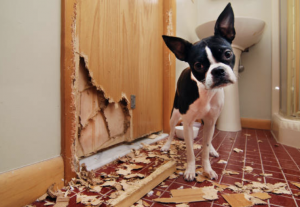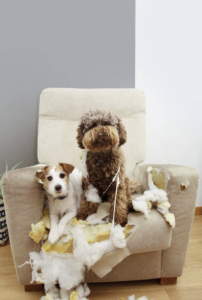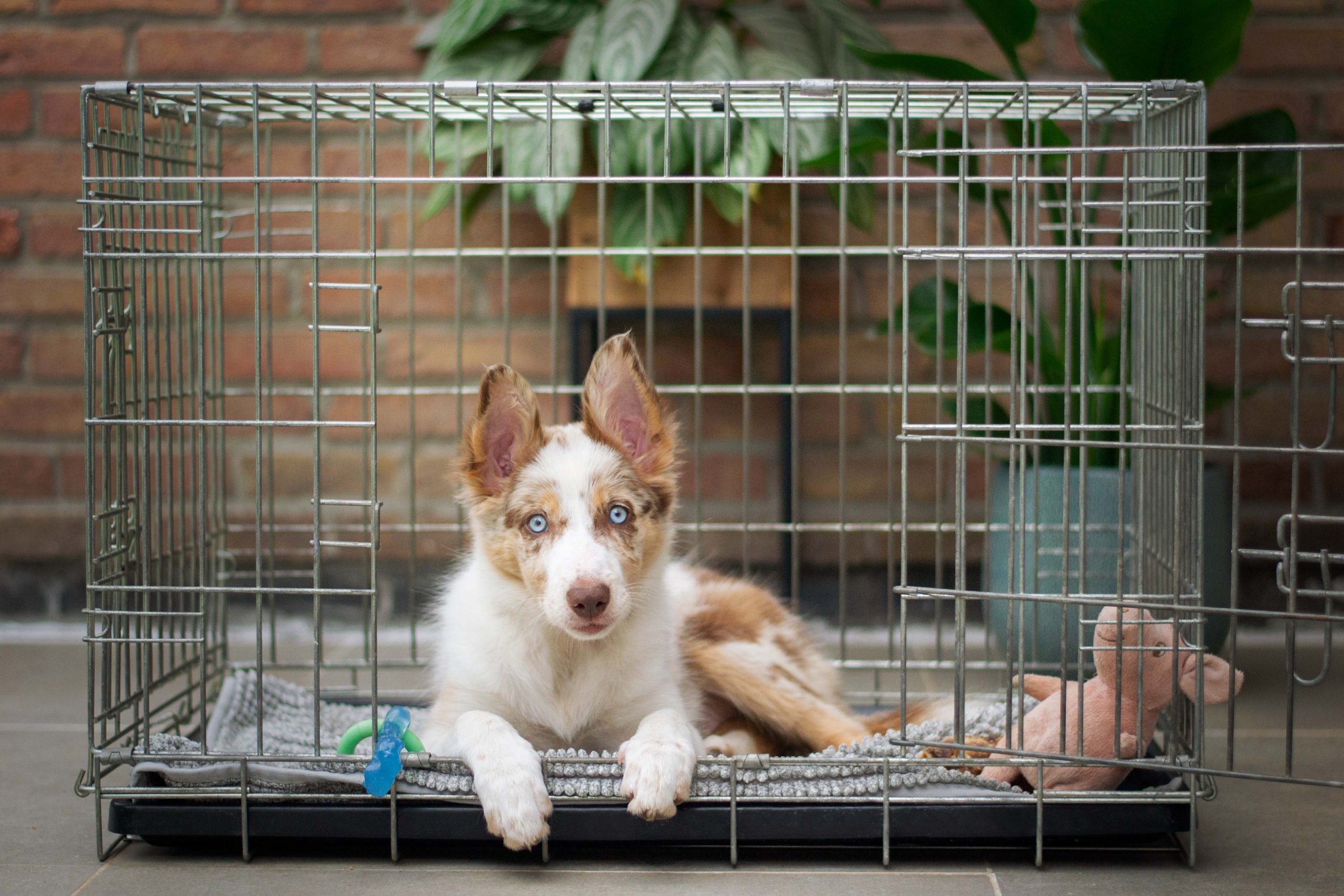7 Guaranteed Steps For Crate Training That Works!
Crate Training: A Comprehensive Guide to Its Benefits and How to Get Started
Crate training is an essential part of raising a well-behaved and happy dog. In this article, we will explore the benefits of crate training, the disadvantages of not crate training your dog, and provide a step-by-step guide on how to crate train your dog effectively. Additionally, we will discuss why Off Leash K9 Training Eastern Iowa is the best dog training company to help you with your dog’s training needs. 
The Benefits of Crate Training
Creating a Safe Space
One of the main benefits of crate training is that it provides your dog with a safe and comfortable space that they can call their own. Dogs have a natural instinct to seek out a den-like environment, and a crate can provide this for them. Having a space where they feel secure can help to reduce anxiety and stress, making it easier for your dog to relax and feel at home.
Establishing Routine and House Training
Crate training can also be a valuable tool in establishing a routine and house training your dog. Dogs typically do not like to soil their sleeping area, so using a crate can help to teach your dog to hold their bladder until they are taken outside. By maintaining a consistent schedule for taking your dog out, you can quickly establish a routine that helps them understand when and where it is appropriate to go to the bathroom.
Preventing Destructive Behavior
Dogs that are not crate trained may be more prone to engaging in destructive behavior when left alone. By crate training your dog, you can prevent them from damaging your home and belongings while you are away. The crate becomes a secure place where your dog can rest without getting into trouble.
Disadvantages of Not Crate Training Your Dog
Increased Anxiety and Fear
Dogs that are not crate trained may experience increased anxiety and fear, especially when faced with new or unfamiliar situations. A crate-trained dog has a safe space that can help them feel secure and comfortable, even in unfamiliar environments.
Difficulty with House Training

Without a crate, house training your dog can become a more challenging and time-consuming process. Dogs that are not crate trained may struggle to understand where it is appropriate to go to the bathroom, leading to accidents in the home.
Behavioral Issues
A lack of crate training can also contribute to behavioral issues such as separation anxiety, excessive barking, and destructive behavior. Crate training provides a structured environment that helps to promote good behavior and discourage bad habits.

How to Crate Train Your Dog
Choosing the Right Crate
Before you begin crate training, it is essential to choose the right crate for your dog. The crate should be large enough for your dog to stand up, turn around, and lie down comfortably but not so large that they have too much extra space. Too much space can encourage your dog to use one side of the crate as a bathroom.
Introducing the Crate
To introduce your dog to the crate, start by placing it in a common area of your home with the door open. Encourage your dog to explore the crate by placing treats, toys, and a comfortable bed inside. Make the crate as inviting as possible, and allow your dog to investigate it at their own pace.
Creating a Positive Association
Once your dog is comfortable with the crate, begin feeding them their meals inside or treats if you prefer to have meals served elsewhere. This will help to create a positive association with the crate and reinforce the idea that it is a safe and enjoyable space. Gradually increase the amount of time your dog spends in the crate after meals or treats, and always reward them with praise and treats for entering the crate willingly.
Gradual Increment of Crate Time
As your dog becomes more comfortable with the crate, you can start to increase the amount of time they spend inside. Begin with short periods of time, such as 10-15 minutes, and gradually work your way up to longer durations. Remember to always make the experience positive by providing treats and praise.
Crate Training While You’re Away
Once your dog is comfortable spending extended periods in their crate, you can begin using it when you leave the house. Start with short absences and gradually increase the time you are away. Make sure to provide your dog with toys and treats to keep them occupied while you are gone.

Never Use the Crate as Punishment
It is extremely important to use the crate as a form of punishment, as this can lead to anxiety or fear in your dog or pup. Only use positive reinforcement and patience to help your dog adjust.
Be Patient and Consistent
Crate training will take time and each dog learns at a different rate, so be patient with yourself and your dog. Some dogs may need a little extra time to get comfortable with the crate. Patience and consistency are key.
Why Off Leash K9 Training Eastern Iowa is the Best Choice for Your Dog’s Training Needs
Off Leash K9 Training Eastern Iowa is the premier dog training company in the region, offering personalized training programs designed to meet your dog’s specific needs. Here’s why we’re the best choice for your dog’s training needs:
Expert Trainers
Our team of professional trainers has extensive experience and knowledge in the field of dog training. They are dedicated to helping you achieve your training goals and ensuring your dog becomes a well-behaved, happy member of your family.
Customized Training Programs
At Off Leash K9 Training Eastern Iowa, we understand that every dog is unique, and their training needs may vary. Our trainers will work with you to develop a customized training program that addresses your dog’s specific needs and ensures their success.
Support and Aftercare
Our commitment to your dog’s training doesn’t end once the program is complete. We offer ongoing support and aftercare to ensure your dog’s continued success and happiness. Our trainers are always available to answer any questions or address any concerns you may have.
Summary
Crate training is a valuable tool in raising a well-behaved, happy dog. By providing your dog with a safe, comfortable space, you can help to reduce anxiety, establish routine, and prevent destructive behavior. On the other hand, not crate training your dog can lead to increased anxiety, difficulty with house training, and behavioral issues. By following our step-by-step guide to crate training, you can set your dog up for success.
If you’re looking for professional assistance with your dog’s training needs, Off Leash K9 Training Eastern Iowa is the best choice. Our expert trainers, customized training programs, and ongoing support make us the premier dog training company in the region. Start your journey towards off-leash freedom and a deeper connection with your dog by giving us a call at (319) 251-2009 or emailing info@olk9iowa.com.
Off Leash K9 Training Eastern Iowa specializes in board and trains as well as lessons. Don’t hesitate to give your dog the best training! To see our work and what is possible for your dog, visit our YouTube page. Follow us on Instagram and Facebook to see amazing dog videos and photos.
To read what our clients think about us, check out our Google Reviews.



